Fenvalerate
Synonym(s):α-Cyano-3-phenoxybenzyl α-(4-chlorophenyl)-iso-valerate
- CAS NO.:51630-58-1
- Empirical Formula: C25H22ClNO3
- Molecular Weight: 419.9
- MDL number: MFCD00055324
- EINECS: 257-326-3
- SAFETY DATA SHEET (SDS)
- Update Date: 2025-01-27 09:38:02
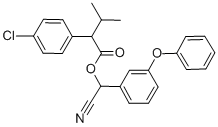
What is Fenvalerate?
Description
Fenvalerate is a yellow-brown viscous liquid that is practically soluble in water. It is stable to moderate heat and light and is rapidly hydrolysed in basic environments (above pH 8). Fenvalerate is a racemic mixture of four stereoisomers in equal proportions owing to the presence of two chiral centres. It is a synthetic type II pyrethroid.
Fenvalerate is registered as an insecticide for a wide array of crop uses, as well as a termiticide and insect repellent.
Chemical properties
It is an ester of 2-(4-chlorophenyl)-3-methylbutyric acid and alpha-cyano-3-phenoxybenzyl alcohol but lacks a cyclopropane ring. However, in terms of its insecticidal behaviour, it belongs to the pyrethroid insecticides. Technical grade fenvalerate is a yellow or brown viscous liquid having a specific gravity of 1.175 at 25°C. The vapour pressure is 0.037 mPa at 25°C, and it is relatively non-volatile. It is practically insoluble in water (approximately 2 μg/L) but soluble in organic solvents such as acetone, xylene, and kerosene. It is stable to light, heat, and moisture but unstable in alkaline media.
Chemical properties
Yellowish to brown viscous liquid. Also available as an emulsifiable concentrate, which is corrosive. Technical grade is a brown viscous liquid. Faint chemical odor. Boiling point = decomposes.
The Uses of Fenvalerate
Fenvalerate controls a wide range of insect pests in fruit, vines, olives, hops, nuts, vegetables, cotton, oilseed rape, sunflowers, alfalfa, cereals, maize, sorghum, potatoes, beets, soyabeans, tobacco, sugar cane and ornamentals. It is also used in public health situations and in animal houses.
The Uses of Fenvalerate
An insecticide, used to control insects from food crops, animal feed and cotton products.
The Uses of Fenvalerate
Insecticide used against a wide variety of pests.
What are the applications of Application
Fenvalerate is a potent inhibitor of calcineurin with suggested activity at GABA receptors and other neuronal activity
Definition
ChEBI: A carboxylic ester obtained by formal condensation between 2-(4-chlorophenyl)-3-methylbutyric acid and cyano(3-phenoxyphenyl)methanol.
General Description
A clear viscious yellow liquid with a mild odor. Used as broad spectrum insecticide.
Air & Water Reactions
Insoluble in water. Rapidly hydrolyzed by alkaline solution.
Reactivity Profile
A pyrethroid. Phenvalerate is an ester and nitrile. Esters react with acids to liberate heat along with alcohols and acids. Strong oxidizing acids may cause a vigorous reaction that is sufficiently exothermic to ignite the reaction products. Heat is also generated by the interaction of esters with caustic solutions. Flammable hydrogen is generated by mixing esters with alkali metals and hydrides. Nitriles may polymerize in the presence of metals and some metal compounds. They are incompatible with acids; mixing nitriles with strong oxidizing acids can lead to extremely violent reactions. Nitriles are generally incompatible with other oxidizing agents such as peroxides and epoxides. The combination of bases and nitriles can produce hydrogen cyanide. Nitriles are hydrolyzed in both aqueous acid and base to give carboxylic acids (or salts of carboxylic acids).
Hazard
Questionable carcinogen.
Contact allergens
Fenvalerate is an insecticide of the synthetic pyrethroid group, which induced sensitization in farmers.
Safety Profile
Poison by ingestion, intravenous, and intracerebral routes. Moderately toxic by skin contact.Experimental reproductive effects. Mutation data reported. Highly toxic to fish and bees. Corrosive, causes eye damage. A skin irritant. When heated to decomposition it emits toxic fumes of Cl-, NOx, and CN-. See also CYANIDE.
Potential Exposure
Fenvalerate is one of the most versatile synthetic pyrethroid insecticides. It is mostly used in agriculture and on cattle, but also in homes and gardens. It acts as a stomach poison against a wide variety of leaf and fruit eating such as bollworm fruit and shoot borers and aphids. Crops on which it is used include cotton, cauliflower, okra, vines and fruits. It is also used in public health and animal husbandry. It is effective against pests whose strains are resistant to organochlorine, organophosphorus, and carbamate insecticides. Not used in EU countries
Environmental Fate
Soil. Fenvalerate is moderately persistent in soil. The percentage of the initial dosage (1 ppm) remaining after 8 weeks of incubation in an organic and mineral soil were 58 and 12%, respectively, while in sterilized controls 100 and 91% remained, respectively (Chapman et al., 1981).
In a sugarcane runoff plot, fenvalerate was applied at a rate of 0.22 kg/ha 4 times each year in 1980 and 1981. Runoff losses in 1980 and 1981 were 0.08 and 0.56 of the applied amount, respectively (Smith et al., 1983).
Plant. Dislodgable residues of fenvalerate on cotton leaf 0, 24, 48, 72 and 96 hours after application (0.22 kg/ha) were 0.85, 0.36, 0.38, 0.28 and 0.28 μg/m2, respectively (Buck et al., 1980).
Surface Water. In an estuary, the half-life of fenvalerate was 27–42 days (Schimmel et al., 1983).
Chemical/Physical. Undergoes hydrolysis at the ester bond (Hartley and Kidd, 1987). Decomposes gradually at 150–300°C (Windholz et al., 1983) probably releasing toxic fumes of nitrogen and chlorine.
Metabolic pathway
After foliar treatment of 14C-fenvalerate on wheat plants, the amount of residual radioactivity in the grain and hull is below the limit of reliable measurement. Individual degradation products accounting for more than 1% of the applied radioactivity are not present in the foliage or straw. Important degradation pathways include decarboxylation and ester cleavage.
Shipping
UN3349 Pyrethroid pesticide, solid toxic, Hazard Class: 6.1; Labels: 6.1-Poisonous material. UN3352 Pyrethroid pesticide, liquid toxic, Hazard Class: 6.1; Labels: 6.1-Poisonous materials.
Degradation
Fenvalerate is relatively stable at pH 5 and 7 (half-lives of 130-220 days),
while at pH 9.0 it undergoes ester hydrolysis (half-life of about 65 days),
resulting in the formation of 2-(4-chlorophenyl)-3-methylbutyric acid
(CPIA, 2) as a major degradation product. Esfenvalerate and fenvalerate
showed no significant difference in hydrolysis rate in water; however,
esfenvalerate underwent epimerisation in the alcohol moiety under alkaline
and neutral aqueous conditions (ICPS, 1990).
Fenvalerate, underwent rapid photodegradation under the action of
UV light with a half-life of 16-18 min in methanol, hexane, or acetonitrile/
water (60/40). 2-(3-Phenoxyphenyl)-3-(4-chlorophenyl)methylpentanenitrile
(decarboxy-fenvalerate) (3) was the major photoproduct, amounting
to 54-57% of the total reaction mixture. There were smaller amounts
of the dechlorinated analogue of decarboxy-fenvalerate (3) and the dimer
of 2,2-dimethyl-4-chlorostyrene3,- phenoxybenzoyl cyanide, 4-chloroisobutylbenzene,
2,2-dimethyl-4-chlorostyrene, 3-phenoxybenzyl cyanide,
its dimer, 1,2-bis(phenoxyphenyl)ethane, CPIA (Z), 3-phenoxybenzoic
acid (3PBA) (4) and 1-(4-chlorophenyl)-2-methylpropano(lH olmstead et
al., 1978). The products are shown in Scheme 1.
The photodegradation of fenvalerate in water and on soil was investigated
using several 14C-labelled preparations. On exposure to sunlight,
fenvalerate was rapidly decomposed in distilled water, 2% aqueous
acetone, filter-sterilised river water or sea water to almost the same
extent. The half-lives were approximately 4 days in summer and 13-15
days in winter. On soil surfaces, the rate of photodegradation was dependent
on the soils used, the half-lives being 2-18 days. One of the major photodegradation products was decarboxy-fenvalerate (3). Other major
products were 3PBA (4) and CPIA (2), derived from the ester bond cleavage,
amounting to 43% and 58%, respectively, of the applied radioactivity
after 6 weeks. In addition, small amounts of a-carbamoyl-3-phenoxybenzyl
2-(4-chloropheny)-3-methylbutyrate(CONH2-fenvalerate) (5), α-carboxy-3-phenoxybenyl 2-(4-chlorophenyl)-3-methylbutyrate( CONH2-fenvalerate)
(6), 3-phenoxybenzyl cyanide, 3-phenoxyphenylacetamide and Sphenoxyphenylacetic acid were formed (Mikami et al., 1980). Traces
of 3-phenoxybenzaldehyde (3PBAl) (7) and 3-phenoxybenzyl alcohol
(3PBalc) (8) (shown in Scheme 2) were also formed.
Toxicity evaluation
Acute oral LD50 for rats: 151 mg/kg
Incompatibilities
ncompatible with oxidizers, chlorates nitrates, peroxides, sulfuric acid, caustics, ammonia, aliphatic amines, alkanolamines, isocyanates, alkylene oxides, epichlorohydrin. Moisture may cause hydrolysis or other forms of decomposition. Emulsifiable concentrate is corrosive
Waste Disposal
Incineration would be an effective disposal procedure where permitted. If an efficient incinerator is not available, the product should be mixed with large amounts of combustible material and contact with the smoke should be avoided. In accordance with 40CFR165, follow recommendations for the disposal of pesticides and pesticide containers
References
[1] http://www.toxipedia.org
[2] Y. Xia, Q. Bian, L. Xu, S. Cheng, L. Song, J. Liu, W. Wu, S. Wang and X. Wang, Genotoxic effects on human spermatozoa among pesticide factory workers exposed to fenvalerate, Toxicology, 2004, vol. 203, 49-60
[3] Terry R Roberts, David H Hutson, Philip W Lee, Peter H Nicholls and Jack R Plimmer, Metabolic Pathways of Agrochemicals: Part 2: Insecticides and Fungicides, 1999
Properties of Fenvalerate
| Melting point: | 54-59℃ |
| Boiling point: | 300°C |
| Density | d23 1.17 |
| vapor pressure | 1.92×10-5 Pa (20 °C) |
| refractive index | nD20 1.5533 |
| storage temp. | Sealed in dry,2-8°C |
| solubility | DMSO:1.0(Max Conc. mg/mL);2.38(Max Conc. mM) DMF:30.0(Max Conc. mg/mL);71.44(Max Conc. mM) Ethanol:5.0(Max Conc. mg/mL);11.91(Max Conc. mM) |
| form | Solid |
| form | neat |
| color | Off-white to light yellow |
| Water Solubility | Soluble in 100% ethanol (>25 mg/ml), water (0.001 g/L) at 20°C, and DMSO. |
| Merck | 13,4038 |
| BRN | 2025982 |
| NIST Chemistry Reference | Benzeneacetic acid, 4-chloro-«alpha»-(1-methylethyl)-, cyano(3-phenoxyphenyl)methyl ester(51630-58-1) |
| IARC | 3 (Vol. 53) 1991 |
| EPA Substance Registry System | Fenvalerate (51630-58-1) |
Safety information for Fenvalerate
| Signal word | Danger |
| Pictogram(s) |
 Skull and Crossbones Acute Toxicity GHS06  Environment GHS09 |
| GHS Hazard Statements |
H301:Acute toxicity,oral H315:Skin corrosion/irritation H319:Serious eye damage/eye irritation H335:Specific target organ toxicity, single exposure;Respiratory tract irritation H410:Hazardous to the aquatic environment, long-term hazard |
| Precautionary Statement Codes |
P261:Avoid breathing dust/fume/gas/mist/vapours/spray. P264:Wash hands thoroughly after handling. P264:Wash skin thouroughly after handling. P273:Avoid release to the environment. P301+P310:IF SWALLOWED: Immediately call a POISON CENTER or doctor/physician. P302+P352:IF ON SKIN: wash with plenty of soap and water. P305+P351+P338:IF IN EYES: Rinse cautiously with water for several minutes. Remove contact lenses, if present and easy to do. Continuerinsing. |
Computed Descriptors for Fenvalerate
Fenvalerate manufacturer
New Products
4,4-Difluoropiperidine hydrochloride tert-butyl 9-methoxy-3-azaspiro[5.5]undecane-3-carboxylate Indole Methyl Resin N-Isopropylurea N,N-Dicyclohexylcarbodiimide(DCC) MELDRUMS ACID 5-METHYLISOXAZOLE-4-CARBOXYLIC ACID Magnessium Bis glycinate Zinc ascorbate 1-bromo-2-butyne 2-acetamidophenol 9(10H)-anthracenone Erythrosin B, 4-Piperidinopiperidine 2-((4-morpholinophenylamino) (methylthio) methylene) malononitrile 2,4-dihydroxybenzaldehyde 3-(4-morpholinophenylamino)-5-amino-1H-pyrazole-4-carbonitrile Methyl 2-methylquinoline-6-carboxylate 2,6-dichloro-4-nitropyridine 4-Bromo-2-chlorobenzonitrile 2-(benzylamino)acetic acid hydrochloride 4-(tert-Butoxycarbonylamino)but- 2-ynoic acid 3,4-dihydro-2H-benzo[b][1,4]dioxepine 1-Phenyl-1-cycloprppanecarboxylicacidRelated products of tetrahydrofuran

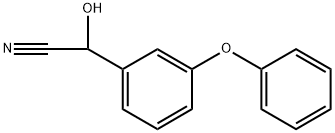
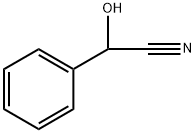
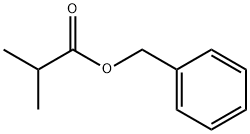




You may like
-
 Fenvalerate CAS 51630-58-1View Details
Fenvalerate CAS 51630-58-1View Details
51630-58-1 -
 Fenvalerate CAS 51630-58-1View Details
Fenvalerate CAS 51630-58-1View Details
51630-58-1 -
 Fenvalerate CAS 51630-58-1View Details
Fenvalerate CAS 51630-58-1View Details
51630-58-1 -
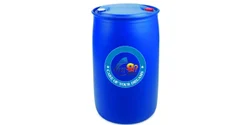 Powder Fenvalerate 92% Technical, 10% ECView Details
Powder Fenvalerate 92% Technical, 10% ECView Details
51630-58-1 -
 FENVALERATE (51630-58-1 )View Details
FENVALERATE (51630-58-1 )View Details
51630-58-1 -
 Fenvalerate 20 Ec Insecticide, 200 LtrView Details
Fenvalerate 20 Ec Insecticide, 200 LtrView Details
51630-58-1 -
 Powder Fenvalerate Technical Chemical, 50 KgView Details
Powder Fenvalerate Technical Chemical, 50 KgView Details
51630-58-1 -
 Fenvalerate 20 Ec Insecticide, 200 Ltr DrumView Details
Fenvalerate 20 Ec Insecticide, 200 Ltr DrumView Details
51630-58-1
